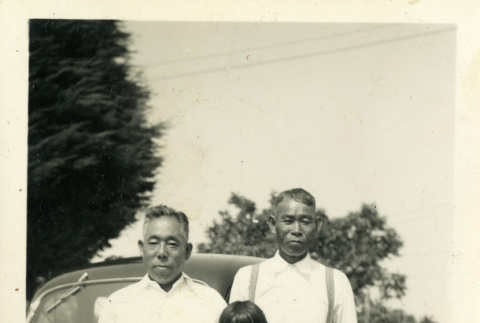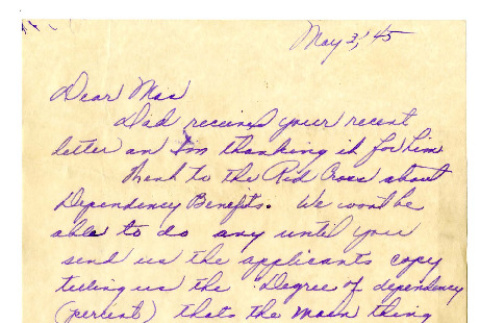Nisei
The Nisei (second generation) felt the pull of two cultures. American born, attending public schools, and influenced by American popular culture, they shared the same idols, favorite songs and sports heroes as most other children of their generation. Wanting to fit in, many Nisei with Japanese first names dropped them for Western ones that their non-Japanese friends could easily pronounce. Yet, most grew up in Japanese neighborhoods, and their parents taught them the customs and values of the old country.
Identity and values
(202)
Nisei
(2544)
Related articles from the
Densho Encyclopedia :
Nisei
2544 items
2544 items
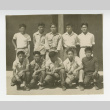
img
Young Nisei men in front of barrack (ddr-csujad-44-16)
A group photograph of ten young Nisei men posing outside in front of a barrack at Tule Lake, California. The men are in two rows. The back row is standing and the front row is crouching. See this object in the California State Universities Japanese American Digitization project site: csumb_ms15_0016
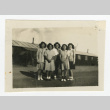
img
Home Makerettes (ddr-csujad-44-43)
A photograph of five young Nisei women incarcerated at Tule Lake, California. They are the members of a women's club, the Home Makerettes. They are standing outside posing together for the camera. Barracks are visible behind them. Photo inscription on back: "The Home Makerettes." Title from inscription. See this object in the California State Universities Japanese …
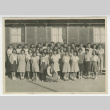
img
Nisei men and women outside barrack (ddr-csujad-44-1)
A large group photograph of young Nisei men and women incarcerated at Tule Lake, California. The group is standing in rows outside a barrack, with one young man kneeling in front. See this object in the California State Universities Japanese American Digitization project site: csumb_ms15_0001

img
Art Club (ddr-csujad-44-34)
A photograph of Nisei students incarcerated at Tule Lake, California posing in front of a barrack with their teacher. They are presumably the members of Art Club. Two young men are standing behind a row of four women seated in chairs. Their Caucasian teacher is seated in a chair on the end of the front row. …
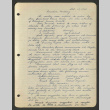
doc
Executive meeting of the Monterey Peninsula Japanese American Citizens League, October 17, 1940 (ddr-csujad-44-168)
Minutes of the Monterey Peninsula Japanese American Citizens League executive meeting. Features discussion of the JACL-sponsored carnival, the New Years dance, the appointment of a new chairman to the dance class, and the suggestion that the chapter discuss how the Nisei should conduct themselves during times of unrest. See this object in the California State Universities …
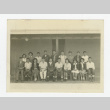
img
S.B. Council outside a barrack (ddr-csujad-44-36)
A photograph of Nisei students incarcerated at Tule Lake, California with their teacher. They are presumably student board council members. They are posing for the photo in two rows in front of a barrack. The back row is standing and the front row is seated in chairs. Photo inscription on back: "S.B. Council." Title from inscription. …
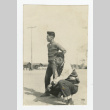
img
Nisei men outside (ddr-csujad-44-47)
A photograph of two young Nisei men incarcerated at Tule Lake, California. They are outside. One young man is standing, and the other young man is crouching on the ground next to him. They are looking at something out of the frame. Rows of barracks are in the background behind the men. Photo inscription on back: …

img
Nisei men's basketball team (ddr-csujad-44-23)
A group photograph of eleven young Nisei men posing outside in front of a barrack at Tule Lake, California. They are presumably basketball team members. The men are in two rows. The back row is standing and the front row is kneeling. There are two basketballs on the ground in front of the group. See this …

doc
Evacuee property receipt (ddr-csujad-42-98)
A property receipt issued to Fumio Fred Takano. It lists two boxes. It appears to be a receipt for the shipment of Fumio's belongings from the Gila River incarceration. See this object in the California State Universities Japanese American Digitization project site: tak_01_50_003
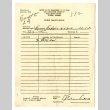
doc
Evacuee property receipt (ddr-csujad-42-97)
A property receipt issued to Fumio Fred Takano. It lists two boxes. It appears to be a receipt for the shipment of Fumio's belongings from the Gila River incarceration to Los Angeles, California. See this object in the California State Universities Japanese American Digitization project site: tak_01_50_002
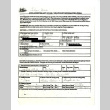
doc
Civil Liberties Act of 1988, voluntary information form (ddr-csujad-42-141)
A copy of the Civil Liberties Act of 1988, voluntary information form to locate persons of Japanese ancestry who were forced to evacuate and were incarcerated during the war. The form is completed by Yoneko Takano. See this object in the California State Universities Japanese American Digitization project site: tak_01_76_001
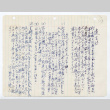
doc
Last will and testament (ddr-csujad-42-34)
Last will and testament prepared by Itsuhei and Tomeyo Takano. English translation is found in item: csudh_tak_0035. See this object in the California State Universities Japanese American Digitization project site: tak_01_21_001
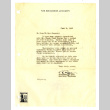
doc
Letter from Theodore K. Ryan, Sanitary Engineer, War Relocation Authority, June 9, 1943 (ddr-csujad-42-93)
A reference letter regarding Fumio Fred Takano. It is written by Theodore K. Ryan, Sanitary Engineer at the Gila River incarceration camp, where Fumio Fred Takano is employed. It appears to be one of the references enclosed with the letter: csudh_tak_0091. See this object in the California State Universities Japanese American Digitization project site: tak_01_48_001
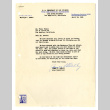
doc
Letter from James L. Shelly, Area Supervisor, U.S. Department of the Interior, to Mr. Fumio Takano, April 19, 1946 (ddr-csujad-42-132)
A letter from James L. Shelly, Area Supervisor, United States Department of the Interior, responding to Fumio Fred Takano's wage claim. It appears that Fumio has submitted a wage claim to recover unpaid wages for two days. It instructs him to submit the further information. See this object in the California State Universities Japanese American Digitization …
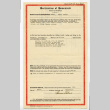
doc
Declaration of homestead: Head of family (ddr-csujad-42-26)
A declaration of homestead signed by Fumio Fred Takano for the property, Lot 21 in Block 11 of G. W. Morgan's Sycamore Grove Tract, Los Angeles. It is notarized by Nisuke Mitsumori. See this object in the California State Universities Japanese American Digitization project site: tak_01_16_001
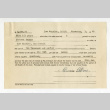
doc
Note from Fumio Takano to Itsuhei Takano (ddr-csujad-42-20)
Note from Fumio Takano to Itsuhei Takano regarding the payment of his loan. Attached to "Real estate mortgage short form" which is found in item: csudh_tak_0019. See this object in the California State Universities Japanese American Digitization project site: tak_01_14_002
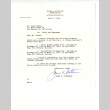
doc
Letter from James K. Mitsumori to Fumio Fred Takano, April 7, 1965 (ddr-csujad-42-28)
A letter from James K. Mitsumori, an attorney, to forward the joint tenancy grant deed and declaration of homestead, which were returned from the Los Angeles County Recorder's Office, to Fumio Fred Takano. Neither documents were found with this letter. See this object in the California State Universities Japanese American Digitization project site: tak_01_17_001

doc
Telegram from G. Arnold to Robert Cullum, Relocation Supervisor, War Relocation Authority, August 5, 1944 (ddr-csujad-42-104)
A telegram from G. Arnold to Robert M. Cullum, Relocation Supervisor, War Relocation Authority, United States Department of the Interior regarding Fumio Fred Takano's request for the permission to reenter California. See this object in the California State Universities Japanese American Digitization project site: tak_01_53_001
![Letter from Takashi Matsuura to Mr. and Mrs. S. Okine, February 12, 1948 [in Japanese] (ddr-csujad-5-235)](https://ddr.densho.org/media/cache/63/c0/63c02d334d7cd2afe9557130b19574d9.jpg)
doc
Letter from Takashi Matsuura to Mr. and Mrs. S. Okine, February 12, 1948 [in Japanese] (ddr-csujad-5-235)
A letter from Takashi Matsuura to his uncle and aunt, Seiichi and Tomeyo Okine. He stayed in the Okines' place while he was performing in Los Angeles. In the letter, he apologizes for the delay in writing to them because of his community work at his place. He informs that he got on a train at …
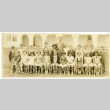
img
Lowell School 1st and 2nd grades (ddr-csujad-5-323)
A photograph of Lowell Elementary School 1st and 2nd graders taken on May 18, 1938. Includes Dorothy Ai Okine. A photograph from "Dorothy Ai Aoki photo album" (csudh_oki_0300), page 6. See this object in the California State Universities Japanese American Digitization project site: oki_08_006_001
![[Dorothy Ai Okine] (ddr-csujad-5-315)](https://ddr.densho.org/media/cache/61/4e/614ed654072055c3c645ebfcbb2dc5b4.jpg)
img
[Dorothy Ai Okine] (ddr-csujad-5-315)
Photographed is Dorothy Ai Okine. A photograph from "Dorothy Ai Aoki photo album" (csudh_oki_0300), page3. See this object in the California State Universities Japanese American Digitization project site: oki_08_003_005
![Letter from Ayame Okine to Mr. and Mrs. Okine, March 6, 1946 [in Japanese] (ddr-csujad-5-137)](https://ddr.densho.org/media/cache/bb/08/bb087a5435d84ce2d4f00508b5f0f2cc.jpg)
doc
Letter from Ayame Okine to Mr. and Mrs. Okine, March 6, 1946 [in Japanese] (ddr-csujad-5-137)
A letter from Ayame Okine in Chicago, Illinois to her parents-in-law, Seiichi and Tomeyo Okine in Hawthorne, California. In the letter, she describes her new job, making women's leather purses. She packs merchandise into boxes for shipping, earning 65 cents per hour. At work, there are only 12 Japanese workers and other workers are all African …
![Letter from Masao Okine to Mr. and Mrs. Okine, July 24, 1946 [in Japanese] (ddr-csujad-5-151)](https://ddr.densho.org/media/cache/dc/d7/dcd7894efe7bd31b3a3098c0ebf4eabc.jpg)
doc
Letter from Masao Okine to Mr. and Mrs. Okine, July 24, 1946 [in Japanese] (ddr-csujad-5-151)
A letter from Masao Okine to his parents, Seiichi and Tomeyo Okine. He writes from Japan where he is stationed as a Nisei soldier. In the letter, he writes about his duties as a jeep driver, working a night shift from 10PM to 6AM. He drives for Japanese coworkers who speak English and serve as interpreters …
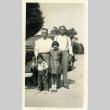
Yamanaka's place (ddr-csujad-5-318)
Photographed are Jokichi Yamanaka, Seiichi Okine, and Dorothy Ai Okine. The handwritten notes on the backside read: Taken at Yamanaka's place on June 28, 1941 [in Japanese]. A photograph from "Dorothy Ai Aoki photo album" (csudh_oki_0300), page 5. See this object in the California State Universities Japanese American Digitization project site: oki_08_005_001
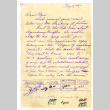
doc
Letter from Seiichi Okine to Masao Okine, May 3, 1945 (ddr-csujad-5-79)
A letter from Seiichi Okine in the Rohwer incarceration camp, Arkansas, to his son, Masao Okine in Fort Meade, Maryland. Seiichi asks questions regarding the family allowance application. See this object in the California State Universities Japanese American Digitization project site: oki_01_18_001
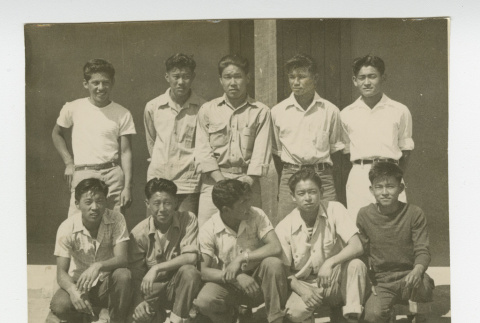
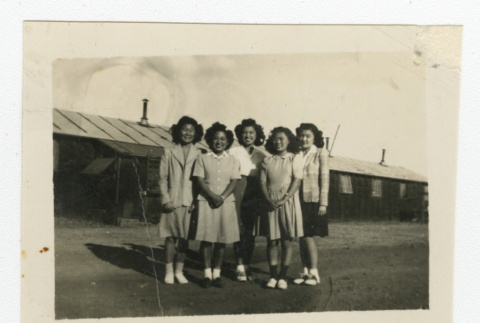
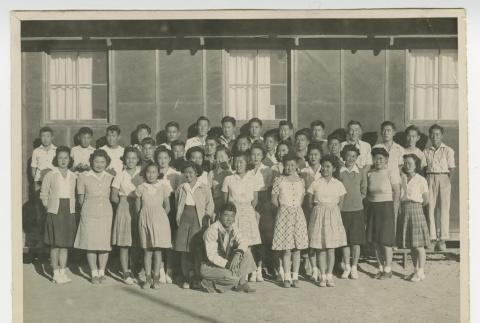


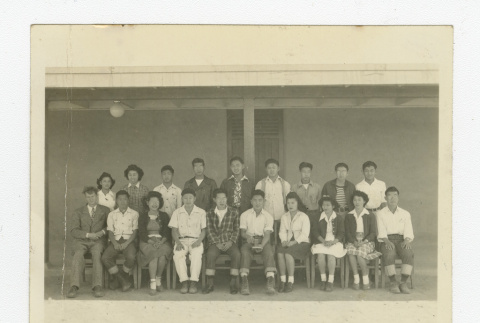
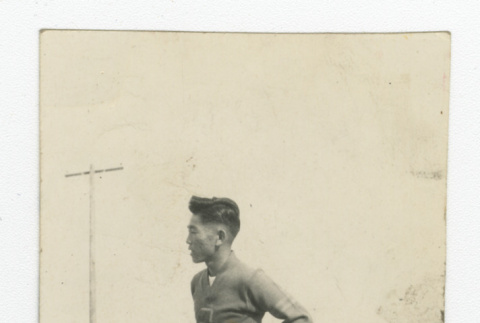
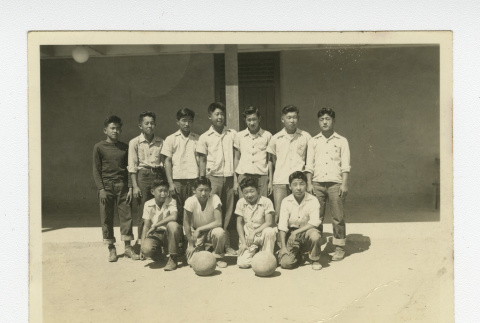
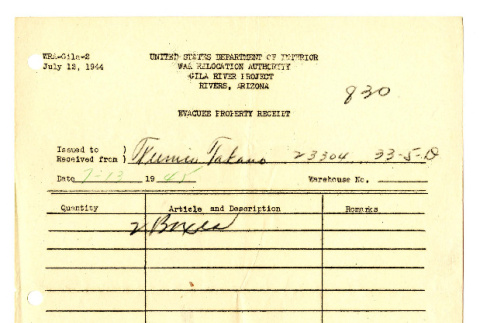
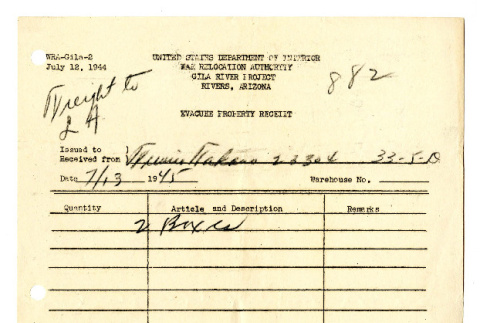
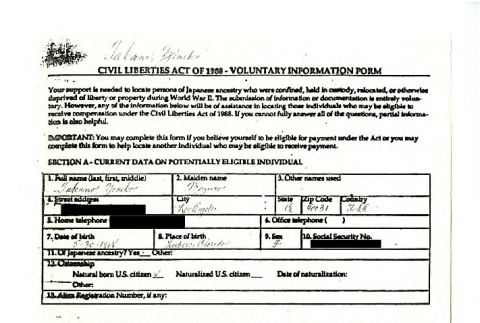
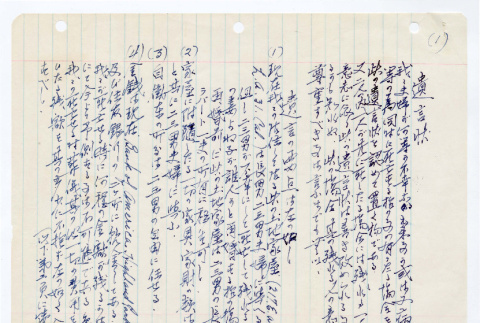
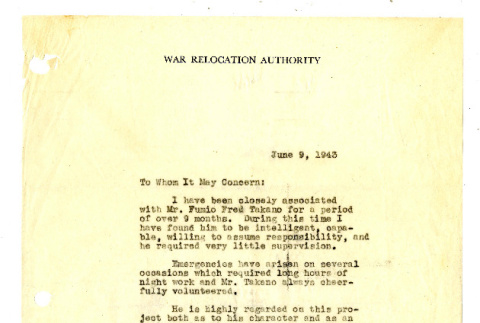
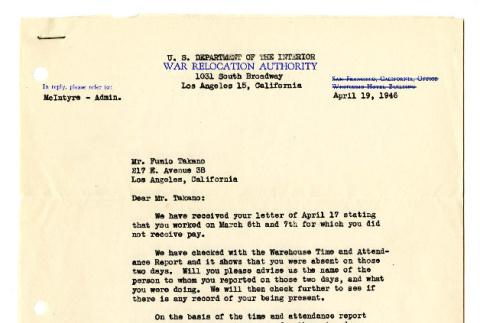
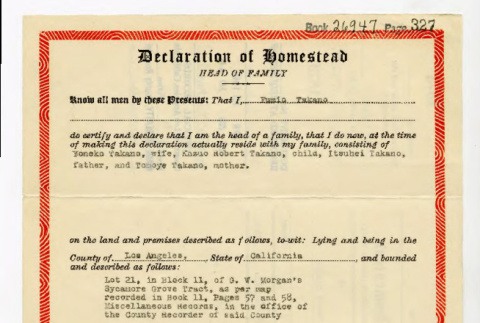
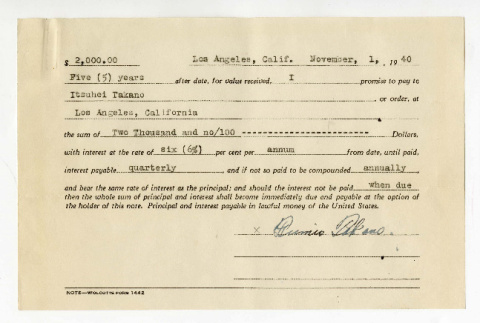
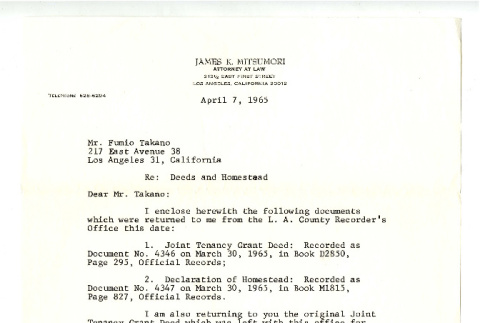
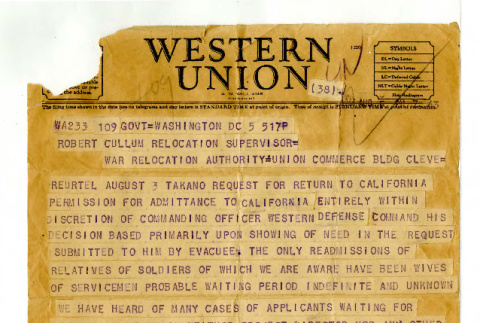
![Letter from Takashi Matsuura to Mr. and Mrs. S. Okine, February 12, 1948 [in Japanese] (ddr-csujad-5-235)](https://ddr.densho.org/media/cache/e3/73/e37351eeec01e49bb788b45032e9e485.jpg)
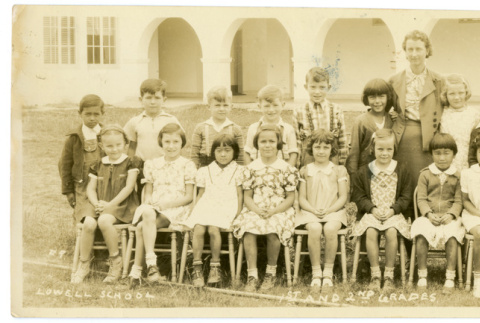
![[Dorothy Ai Okine] (ddr-csujad-5-315)](https://ddr.densho.org/media/cache/0a/e4/0ae4e6b1182718be821ca5811e482114.jpg)
![Letter from Ayame Okine to Mr. and Mrs. Okine, March 6, 1946 [in Japanese] (ddr-csujad-5-137)](https://ddr.densho.org/media/cache/2d/00/2d00920b513ddd8e6fd2bdace1f7335a.jpg)
![Letter from Masao Okine to Mr. and Mrs. Okine, July 24, 1946 [in Japanese] (ddr-csujad-5-151)](https://ddr.densho.org/media/cache/09/51/09515f789934c4ecd56395896cfd5553.jpg)
